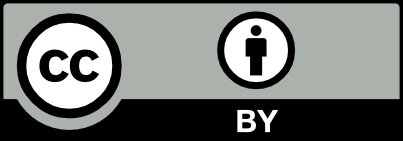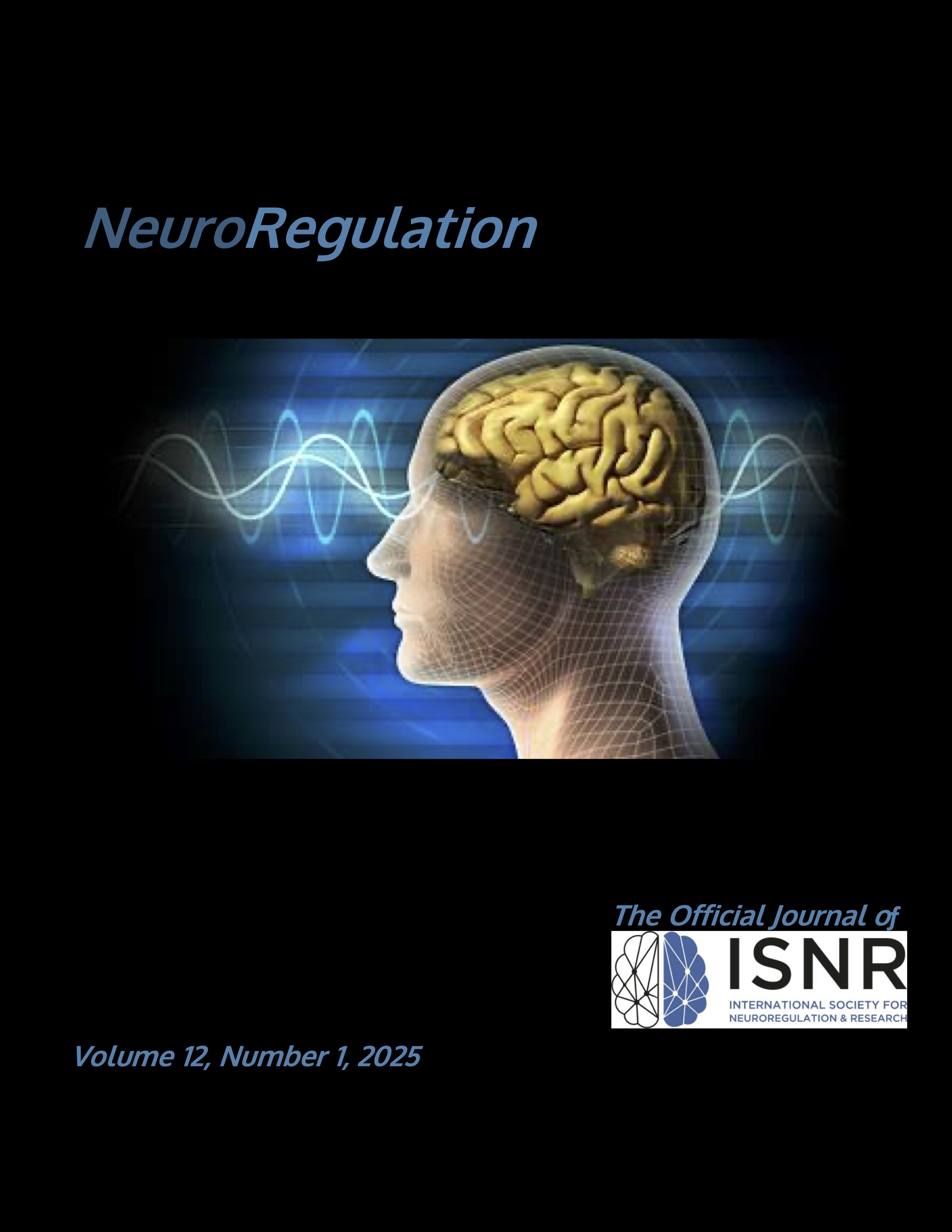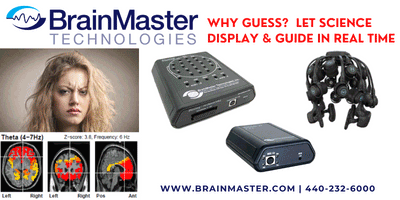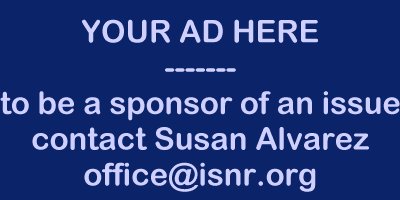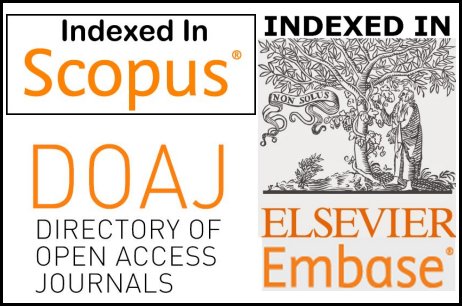Towards the Clinical Implementation of Noninvasive Brain Stimulation for Alleviating Social Communication Challenges: Input From Two Critical Stakeholder Groups
DOI:
https://doi.org/10.15540/nr.12.1.29Keywords:
noninvasive brain stimulation, transcranial direct current stimulation, social communication, autism spectrum disorder (ASD), speech language pathologyAbstract
Introduction. Using noninvasive brain stimulation (NIBS) during social communication therapy significantly improves performance when compared to providing therapy alone. Speech-language pathologists (SLPs) have expertise and training in providing social communication therapy for individuals with social communication challenges, such as autistic individuals. Methods. Two studies were completed to gain input from stakeholders who will influence NIBS’s path forward for clinical use in treating social communication challenges. Study 1 examined surveys from SLPs on the clinical implementation of NIBS. Study 2 examined surveys from autistic adults about their own personal experiences after completing a research study using NIBS. Results. The top concerns of SLPs for the clinical implementation of NIBS were focused on the availability of safety and efficacy research, access to training, and the cost of using NIBS. Autistic adults who had previously participated in a research study using NIBS reported no safety concerns but did report a desire to use NIBS again, especially if they could access it remotely through video supervision with a trained professional. Conclusions. The findings of these studies inform the future clinical implementation of NIBS for improving social communication therapy with individuals with social challenges, such as autistic individuals.
References
Aishworiya, R., Valica, T., Hagerman, R., & Restrepo, B. (2022). An update on psychopharmacological treatment of autism spectrum disorder. Neurotherapeutics, 19(1), 248–262. https://doi.org/10.1007/s13311-022-01183-1
American Psychiatric Association. (2013). Diagnostic and statistical manual of mental disorders (5th ed.). https://doi.org/10.1176/appi.books.9780890425596
American Speech-Language-Hearing Association. (2024a). Social communication disorder. https://www.asha.org/Practice-Portal/Clinical-Topics/Social-Communication-Disorder/
American Speech-Language-Hearing Association. (2024b). The EBP process. ASHA. https://www.asha.org/Research/EBP/Evidence-Based-Practice-Process/
Antal, A., Luber, B., Brem, A. K., Bikson, M., Brunoni, A. R., Cohen Kadosh, R., Dubljević, V., Fecteau, S., Ferreri, F., Flöel, A., Hallett, M., Hamilton, R. H., Herrmann, C. S., Lavidor, M., Loo, C., Lustenberger, C., Machado, S., Miniussi, C., Moliadze, V., … Paulus, W. (2022). Non-invasive brain stimulation and neuroenhancement. Clinical Neurophysiology Practice, 7, 146–165. https://doi.org/10.1016/j.cnp.2022.05.002
Ayres, M., Parr, J. R., Rodgers, J., Mason, D., Avery, L., & Flynn, D. (2018). A systematic review of quality of life of adults on the autism spectrum. Autism, 22(7), 774–783. https://doi.org/10.1177/1362361317714988
Baron-Cohen, S. (2009). Autism: The empathizing-systemizing (E-S) theory. Annals of the New York Academy of Sciences, 1156(1), 68–80. https://doi.org/10.1111/j.1749-6632.2009.04467.x
Baron-Cohen, S., Wheelwright, S., Skinner, R., Martin, J., & Clubley, E. (2001). The autism spectrum quotient: Evidence from Asperger syndrome/high functioning autism, males and females, scientists and mathematicians. Journal of Autism and Developmental Disorders, 31, 5–17. https://doi.org/10.1023/A:1005653411471
Bikson, M., Grossman, P., Thomas, C., Zannou, A. L., Jiang, J., Adnan, T., Mourdoukoutas, A. P., Kronberg, G., Truong, D., Boggio, P., Brunoni, A. R., Charvet, L., Fregni, F., Fritsch, B., Gillick, B., Hamilton, R. H., Hampstead, B. M., Jankord, R., Kirton, A., … Woods, A. J. (2016). Safety of transcranial direct current stimulation: Evidence based update 2016. Brain Stimulation, 9(5), 641–661. https://doi.org/10.1016/j.brs.2016.06.004
Boulter, C., Freeston, M., South, M., & Rodgers, J. (2014). Intolerance of uncertainty as a framework for understanding anxiety in children and adolescents with autism spectrum disorders. Journal of Autism and Developmental Disorders, 44, 1391–1402. https://doi.org/10.1007/s10803-013-2001-x
Camm-Crosbie, L., Bradley, L., Shaw, R., Baron-Cohen, S., & Cassidy, S. (2019). ‘People like me don’t get support’: Autistic adults’ experiences of support and treatment for mental health difficulties, self-injury and suicidality. Autism, 23(6), 1431–1441. https://doi.org/10.1177/1362361318816053
Cappon, D., den Boer, T., Jordan, C., Yu, W., Lo, A., LaGanke, N., Biagi, M. C., Skorupinski, P., Ruffini, G., Morales, O., Metzger, E., Manor, B., & Pascual-Leone, A. (2022). Safety and feasibility of tele-supervised home-based transcranial direct current stimulation for major depressive disorder. Frontiers in Aging Neuroscience, 13, Article 765370. https://doi.org/10.3389/fnagi.2021.765370
Chan, M. M. Y., Choi, C. X. T., Tsoi, T. C. W., Shea, C. K. S., Yiu, K. W. K., & Han, Y. M. Y. (2023). Effects of multisession cathodal transcranial direct current stimulation with cognitive training on sociocognitive functioning and brain dynamics in autism: A double-blind, sham-controlled, randomized EEG study. Brain Stimulation, 16(6), 1604–1616. https://doi.org/10.1016/j.brs.2023.10.012
Connolly, K. R., Helmer, A., Cristancho, M. A., Cristancho, P., & O’Reardon, J. P. (2012). Effectiveness of transcranial magnetic stimulation in clinical practice post-FDA approval in the United States: Results observed with the first 100 consecutive cases of depression at an academic medical center. Journal of Clinical Psychiatry, 73(4), e567–e573. https://doi.org/10.4088/JCP.11m07413
Cucca, A., Sharma, K., Agarwal, S., Feigin, A. S., & Biagioni, M. C. (2019). Tele-monitored tDCS rehabilitation: Feasibility, challenges and future perspectives in Parkinson’s disease. Journal of NeuroEngineering and Rehabilitation, 16(1), Article 20. https://doi.org/10.1186/s12984-019-0481-4
Esse Wilson, J., Trumbo, M. C., & Tesche, C. D. (2021). Transcranial direct current stimulation (tDCS) improves empathy and recognition of facial emotions conveying threat in adults with autism spectrum disorder (ASD): A randomized controlled pilot study. NeuroRegulation, 8(2), 87–95. https://doi.org/10.15540/NR.8.2.87
Esse Wilson, J., Trumbo, M. C., Wilson, J. K., & Tesche, C. D. (2018). Transcranial direct current stimulation (tDCS) over right temporoparietal junction (rTPJ) for social cognition and social skills in adults with autism spectrum disorder (ASD). Journal of Neural Transmission, 125(12), 1857–1866. https://doi.org/10.1007/s00702-018-1938-5
Esse Wilson, J., Quinn, D. K., Wilson, J. K., Garcia, C. M., & Tesche, C. D. (2018). Transcranial direct current stimulation to the right temporoparietal junction for social functioning in autism spectrum disorder. The Journal of ECT, 34(1), e10–e13. https://doi.org/10.1097/YCT.0000000000000445
Feroe, A. G., Uppal, N., Gutiérrez-Sacristán, A., Mousavi, S., Greenspun, P., Surati, R., Kohane, I. S., & Avillach, P. (2021). Medication use in the management of comorbidities among individuals with autism spectrum disorder from a large nationwide insurance database. JAMA Pediatrics, 175(9), 957–965. https://doi.org/10.1001/jamapediatrics.2021.1329
Filmer, H. L., Dux, P. E., & Mattingley, J. B. (2014). Applications of transcranial direct current stimulation for understanding brain function. Trends in Neurosciences, 37(12), 742–753. https://doi.org/10.1016/j.tins.2014.08.003
Gardner, W., Mulvey, E. P., & Shaw, E. C. (1995). Regression analyses of counts and rates: Poisson, overdispersed Poisson, and negative binomial models. Psychological Bulletin, 118(3), 392–404. https://doi.org/10.1037/0033-2909.118.3.392
Gough, N., Brkan, L., Subramaniam, P., Chiuccariello, L., De Petrilloid, A., Mulsant, B. H., Bowie, C. R., & Rajjiid, T. K. (2020). Feasibility of remotely supervised transcranial direct current stimulation and cognitive remediation: A systematic review. PLoS ONE, 15(2), Article e0223029. https://doi.org/10.1371/journal.pone.0223029
Hadoush, H., Nazzal, M., Almasri, N. A., Khalil, H., & Alafeef, M. (2020). Therapeutic effects of bilateral anodal transcranial direct current stimulation on prefrontal and motor cortical areas in children with autism spectrum disorders: A pilot study. Autism Research, 13(5), 828–836. https://doi.org/10.1002/aur.2290
Han, Y. M. Y., Chan, M. M. Y., Shea, C. K. S., Mo, F. Y. M., Yiu, K. W. K., Chung, R. C. K., Cheung, M. C., & Chan, A. S. (2023). Effects of prefrontal transcranial direct current stimulation on social functioning in autism spectrum disorder: A randomized clinical trial. Autism, 27(8), 2465–2482. https://doi.org/10.1177/13623613231169547
Happe, F., & Vital, P. (2009). What aspects of autism predispose to talent? Philosophical Transactions of the Royal Society, 364, 1369–1375. https://doi.org/10.1098/rstb.2008.0332
Harris, P. A., Taylor, R., Thielke, R., Payne, J., Gonzalez, N., & Conde, J. G. (2009). Research electronic data capture (REDCap)—A metadata-driven methodology and workflow process for providing translational research informatics support. Journal of Biomedical Informatics, 42(2), 377–381. https://doi.org/10.1016/j.jbi.2008.08.010
Jog, M. V., Wang, D. J. J., & Narr, K. L. (2019). A review of transcranial direct current stimulation (tDCS) for the individualized treatment of depressive symptoms. Personalized Medicine in Psychiatry, 17, 17–22. https://doi.org/10.1016/j.pmip.2019.03.001
Keator, L. M., Basilakos, A., Rorden, C., Elm, J., Bonilha, L., & Fridriksson, J. (2020). Clinical implementation of transcranial direct current stimulation in aphasia: A survey of speech-language pathologists. American Journal of Speech-Language Pathology, 29(3), 1376–1388. https://doi.org/10.1044/2020_AJSLP-19-00037
Klinger, L. G., Cook, M. L., & Dudley, K. M. (2021). Predictors and moderators of treatment efficacy in children and adolescents with autism spectrum disorder. Journal of Clinical Child & Adolescent Psychology, 50(4), 517–524. https://doi.org/10.1080/15374416.2020.1833735
Leadbitter, K., Buckle, K. L., Ellis, C., & Dekker, M. (2021). Autistic self-advocacy and the neurodiversity movement: Implications for autism early intervention research and practice. Frontiers in Psychology, 12, Article 635690. https://doi.org/10.3389/fpsyg.2021.635690
Liu, A., Gong, C., Wang, B., Sun, J., & Jiang, Z. (2023). Non-invasive brain stimulation for patient with autism: A systematic review and meta-analysis. Frontiers in Psychiatry, 14, Article 1147327. https://doi.org/10.3389/fpsyt.2023.1147327
Lord, C., Rutter, M., DiLavore, P. C., Risi, S., Gotham, K., & Bishop, S. (2012). Autism diagnostic observation schedule (2nd ed.). Western Psychological Services.
Maenner, M. J., Warren, Z., Williams, A. R., Amoakohene, E., Bakian, A. V., Bilder, D. A., Durkin, M. S., Fitzgerald, R. T., Furnier, S. M., Hughes, M. M., Ladd-Acosta, C. M., McArthur, D., Pas, E. T., Salinas, A., Vehorn, A., Williams, S., Esler, A., Grzybowski, A., Hall-Lande, J., … Shaw, K. A. (2023). Prevalence and characteristics of autism spectrum disorder among children aged 8 years - Autism and developmental disabilities monitoring network, 11 sites, United States, 2020. MMWR Surveillance Summaries, 72(2), 1–14. https://doi.org/10.15585/mmwr.ss7202a1
Martin, A. K., Huang, J., Hunold, A., & Meinzer, M. (2019). Dissociable roles within the social brain for self-other processing: A HD-tDCS study. Cerebral Cortex, 29(8), 3642–3654. https://doi.org/10.1093/cercor/bhy238
Mattioli, F., Maglianella, V., D’Antonio, S., Trimarco, E., & Caligiore, D. (2024). Non-invasive brain stimulation for patients and healthy subjects: Current challenges and future perspectives. Journal of the Neurological Sciences, 456, Article 122825. https://doi.org/10.1016/j.jns.2023.122825
Mondino, M., Bennabi, D., Poulet, E., Galvao, F., Brunelin, J., & Haffen, E. (2014). Can transcranial direct current stimulation (tDCS) alleviate symptoms and improve cognition in psychiatric disorders? The World Journal of Biological Psychiatry, 15(4), 261–275. https://doi.org/10.3109/15622975.2013.876514
Palm, U., Schiller, C., Fintescu, Z., Obermeier, M., Keeser, D., Reisinger, E., Pogarell, O., Nitsche, M. A., Möller, H.-J., & Padberg, F. (2012). Transcranial direct current stimulation in treatment resistant depression: A randomized double-blind, placebo-controlled study. Brain Stimulation, 5(3), 242–251. https://doi.org/10.1016/j.brs.2011.08.005
Pilloni, G., Vogel-Eyny, A., Lustberg, M., Best, P., Malik, M., Walton-Masters, L., George, A., Mirza, I., Zhovtis, L., Datta, A., Bikson, M., Krupp, L., & Charvet, L. (2022). Tolerability and feasibility of at-home remotely supervised transcranial direct current stimulation (RS-tDCS): Single-center evidence from 6,779 sessions. Brain Stimulation, 15(3), 707–716. https://doi.org/10.1016/j.brs.2022.04.014
Qiao, Y., Hu, Q., Xuan, R., Guo, Q., Ge, Y., Chen, H., Zhu, C., Ji, G., Yu, F., Wang, K., & Zhang, L. (2020). High-definition transcranial direct current stimulation facilitates emotional face processing in individuals with high autistic traits: A sham-controlled study. Neuroscience Letters, 738, Article 125396. https://doi.org/10.1016/j.neulet.2020.135396
Ratner, N. B. (2006). Evidence-based practice: An examination of its ramifications for the practice of speech-language pathology. Language, Speech, and Hearing Services in Schools, 37(4), 257–267. https://doi.org/10.1044/0161-1461(2006/029)
Richardson, J. D., Galletta, E. E., Charvet, L., & Shaw, M. (2023). Feasibility of remotely supervised transcranial direct current stimulation (RS-tDCS) for people with stroke-induced and progressive aphasia. Aphasiology, 37(7), 1039–1063. https://doi.org/10.1080/02687038.2022.2076279
Rødgaard, E.-M., Jensen, K., Miskowiak, K. W., & Mottron, L. (2022). Representativeness of autistic samples in studies recruiting through social media. Autism Research, 15(8), 1447–1456. https://doi.org/10.1002/aur.2777
Romei, V., Borgatti, R., & Urgesi, C. (2019). Non-invasive brain stimulation for the rehabilitation of children and adolescents with neurodevelopmental disorders: A systematic review. Frontiers in Psychology, 10, Article 135. https://doi.org/10.3389/fpsyg.2019.00135
Roux, A. M., Rast, J. E., Rava, J. A., Anderson, K. A., & Shattuck, P. T. (2015). National autism indicators report: Transition into young adulthood. Life Course Outcomes Research Program, A. J. Drexel Autism Institute, Drexel University. https://drexel.edu/autismoutcomes/publications-and-reports/publications/National-Autism-Indicators-Report-Transition-to-Adulthood/
Sauvaget, A., Tostivint, A., Etcheverrigaray, F., Pichot, A., Dert, C., Schirr-Bonnais, S., Clouet, J., Sellal, O., Mauduit, N., Leux, C., Cabelguen, C., Bulteau, S., & Riche, V.-P. (2019). Hospital production cost of transcranial direct current stimulation (tDCS) in the treatment of depression. Neurophysiologie Clinique, 49(1), 11–18. https://doi.org/10.1016/j.neucli.2018.11.001
Schiltz, H., McVey, A. J., Dolan Wozniak, B., Haendel, A. D., Stanley, R., Arias, A., Gordon, N., & Van Hecke, A. V. (2021). The role of loneliness as a mediator between autism features and mental health among autistic young adults. Autism, 25(2), 545–555. https://doi.org/10.1177/1362361320967789
Vaismoradi, M., Jones, J., Turunen, H., & Snelgrove, S. (2016). Theme development in qualitative content analysis and thematic analysis. Journal of Nursing Education and Practice, 6(5), 100–110. https://doi.org/10.5430/jnep.v6n5p100
Zheng, E. Z., Wong, N. M. L., Yang, A. S. Y., & Lee, T. M. C. (2024). Evaluating the effects of tDCS on depressive and anxiety symptoms from a transdiagnostic perspective: A systematic review and meta-analysis of randomized controlled trials. Translational Psychiatry, 14(1), Article 295. https://doi.org/10.1038/s41398-024-03003-w
Downloads
Published
Issue
Section
License
Copyright (c) 2025 Joan Esse Wilson, M. Blake Rafferty, Guadalupe Duran, Alexandra Ortiz, Claudia D. Tesche

This work is licensed under a Creative Commons Attribution 4.0 International License.
Authors who publish with this journal agree to the following terms:- Authors retain copyright and grant the journal right of first publication with the work simultaneously licensed under a Creative Commons Attribution License (CC-BY) that allows others to share the work with an acknowledgement of the work's authorship and initial publication in this journal.
- Authors are able to enter into separate, additional contractual arrangements for the non-exclusive distribution of the journal's published version of the work (e.g., post it to an institutional repository or publish it in a book), with an acknowledgement of its initial publication in this journal.
- Authors are permitted and encouraged to post their work online (e.g., in institutional repositories or on their website) prior to and during the submission process, as it can lead to productive exchanges, as well as earlier and greater citation of published work (See The Effect of Open Access).
